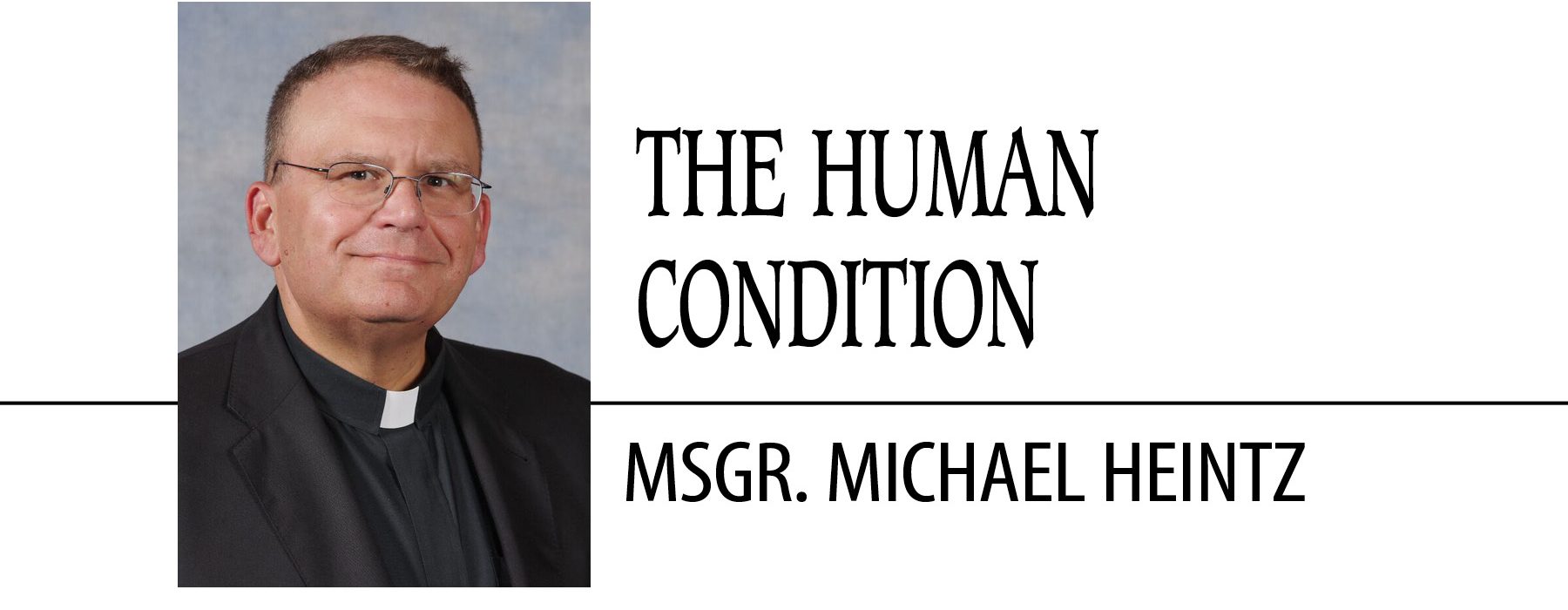May 5, 2021 // Perspective
The public prayers of the Church
Not long ago, you probably noticed on a change made to the public prayer of the Church —at least in English — beginning this past Lent: Prayers addressed to the Father, like the Opening Prayer or Collect of almost every Mass, customarily end with the Trinitarian formula: “through our Lord Jesus Christ, your Son, who lives and reigns with you in the unity of the Holy Spirit, God forever and ever.”
Formerly we heard “One God, forever and ever.” But it is very clear that in the original Latin of the prayer, the word “One” is not found and, more importantly, the “God” refers to Jesus, the incarnate Son. So, the point of it all is that the “God” at the end of the prayer is not a reference to the Triune Deity (“One God”) but is used to emphasize the divine person of the Son who has taken upon Himself our humanity: Jesus, the Word made flesh, is God, forever and ever.
The public — liturgical — prayers of the Church seek to accomplish two things simultaneously: They reflect, and they effect. That is, they both make a claim about the truth of things and at the same time work to bring about that truth more fully in the lives of those who pray those words.
Now, most often at Mass the one who “prays” those words is the priest, but in reality, all the prayers the priest utters out loud are spoken out loud precisely because they are not merely his personal prayer, but rather he acts as the one who speaks on behalf of the people; this is one of the things that is expressed by calling the priest a “mediator.” There are some prayers that the priest says quietly, almost under his breath, at Mass, and these prayers are kept quiet precisely because they are his own, personal prayers: before and after reading the Gospel, as he washes his hands, before his own reception of Communion. These prayers, spoken softly, are not prayers on behalf of the people, which are ordinarily spoken in a voice to be heard by all.
There is, however, a kind of “architecture” of prayer within every Mass, set prayers that begin and end the Mass, as well as fixed features with varying content throughout.
Take, for example, what is called the Collect or “Opening Prayer” at the beginning of any Mass, and which follows the invitation of the priest: “Let us pray.” These words, often related — especially during the special seasons of Advent, Christmas, Lent and Easter — to the readings or the mystery celebrated on that day, both reveal the truth about God, humanity, the Church, the world or the life to come, and at the same time seek to make that truth more real, more vivid, more alive, in the minds, hearts and lives of those who pray them.
The Prayer over the Gifts reveals how what we offer to God has — and will have — an effect on our lives, precisely because of what He in fact accomplishes for us in return.
Apart from Ordinary Time, the Preface is also closely related to the feast or season and expresses the mystery in words that drive home its effect in our life. The Preface often encapsulates an aspect of the faith that we proclaim and so it teaches, often in more poetic, less didactic language, what the Church professes and believes to be true, and at the same time invites those who pray it to enter more deeply — with the mind and heart (and at Mass, even their body!) — into that truth. Truths of the faith, it is important to remember, are not abstract concepts — too often that’s how they are either portrayed or understood — but vibrant realities in some manner connected organically to a living person, Jesus Christ, whose Spirit enlivens the Church, deepening our faith in the Lordship of Jesus, dead and risen, who alone can lead us to the Father at whose right hand He sits in His (and our) glorified human nature.
The text of the Eucharistic Prayers (most common in our experience are the Roman Canon, also known as Eucharistic Prayer I, and Eucharistic Prayers II and III) also are a rich source for spiritual nourishment. It is worth reading them before Mass and praying over them. Some find it helpful to read along with them in a Missalette as the priest is praying them.
Finally, the post-Communion prayer almost always points out for our reflection just what the Eucharist we have celebrated and received also promises us for the future. There is often a noticeable “eschatological” tonality in these prayers: What we do here in an incomplete or shadowy way we long to be accomplished in us fully in the age to come.
You might notice also at Mass the way in which the public prayers often “borrow” or “incorporate” language from the Scriptures and employ them in prayer. This is hardly plagiarism, but rather reflects the fact that the idiom, the language and the speech the Church uses is always rooted in the sacred text. It’s how Christians speak, because the divine word should form all our words, and we should allow the language of the Bible to form and shape our imagination.
Perhaps it is worth investing in a subscription to Magnificat, Give Us This Day or the Daily Roman Missal, in order to enrich your own experience of the Church’s rich language of prayer.
The best news. Delivered to your inbox.
Subscribe to our mailing list today.






